The Chateau d’Amboise was Eloise’s favorite castle! It’s perched on a hill alongside the Loire River and overlooks the town. We could see our apartment from the battlements. The castle itself is beautiful, the view from the walls is charming, there are real suits of medieval armor inside, and the gardens were perfect for running around and playing hide and seek. The kids held up tablets in each room that would let you look into the past and see how the rooms looked in their heyday—they really enjoyed that. Then they frolicked under the citrus trees and around the lavender balls dotting the gardens. I heard one family remark in French on the bushes: “They look like little cushions. Boing, boing, boing!” Also, Leonardo da Vinci is buried here.
Posting about places weeks after we visited is fun; rereading the info booklet after having visited other chateaux in the area helps me start to piece it all together in a way I couldn’t when I was hearing it all for the first time. Also, home in Brussels, it’s raining outside and I’m sipping herbal tea—quite a contrast to sunglasses and tromping through sunlit castles. More than anything, everyone’s mutual enjoyment made this a really fun trip. Happy kids, perfect weather, Frenchy France. Ok, on to the history!!
The earliest known inhabitants of the region were Celtic! The earliest beginnings of today’s chateau was carved out in the 4th Century. In 1431 the castle was confistated from the Lord of Amboise for the crown, in response to…plotting of some kind I guess? Then Louis XI built an oratory on top for his wife, Charlotte of Savoy (I’m reading a book about London’s Savoy hotel, named after the land it’s on, which is where the medieval castle of the Savoy family was built). In 503, Clovis, King of the Franks (whose tomb was found in the Belgian city of Tournai) met with Alaric, King of the Visigoths opposite the northern ramparts out on that little island in the Loire River. What!
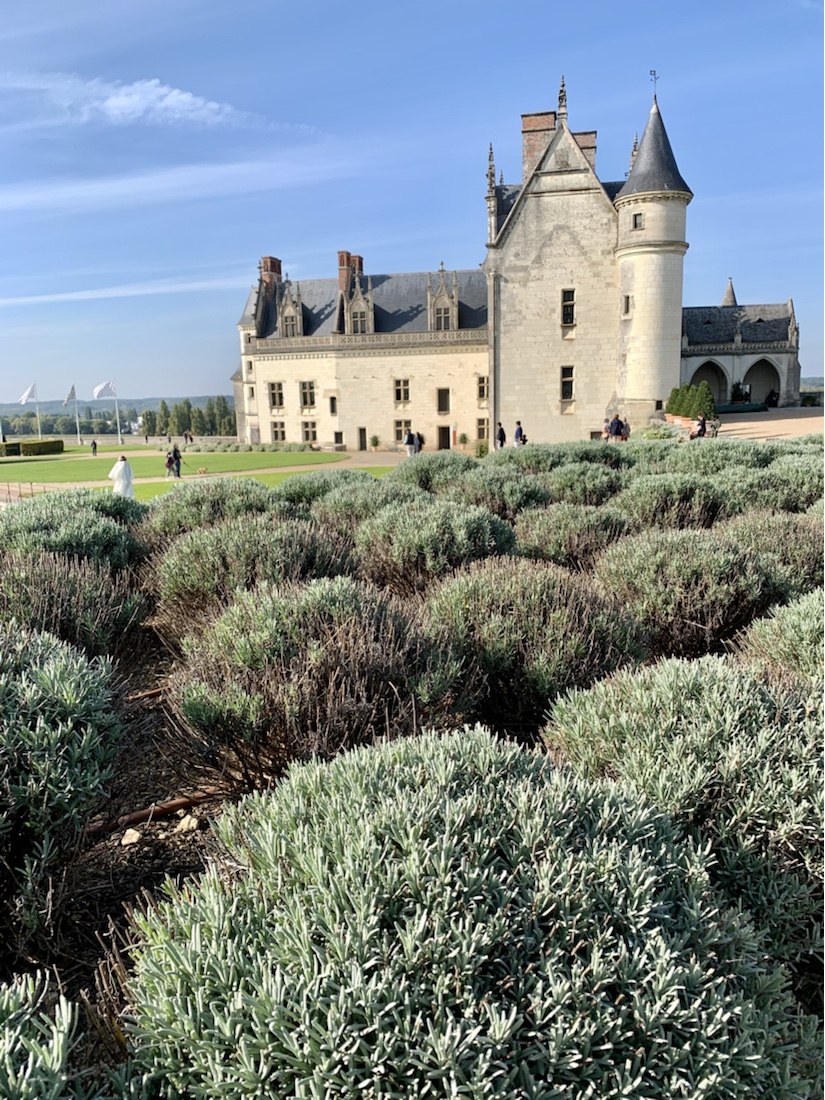
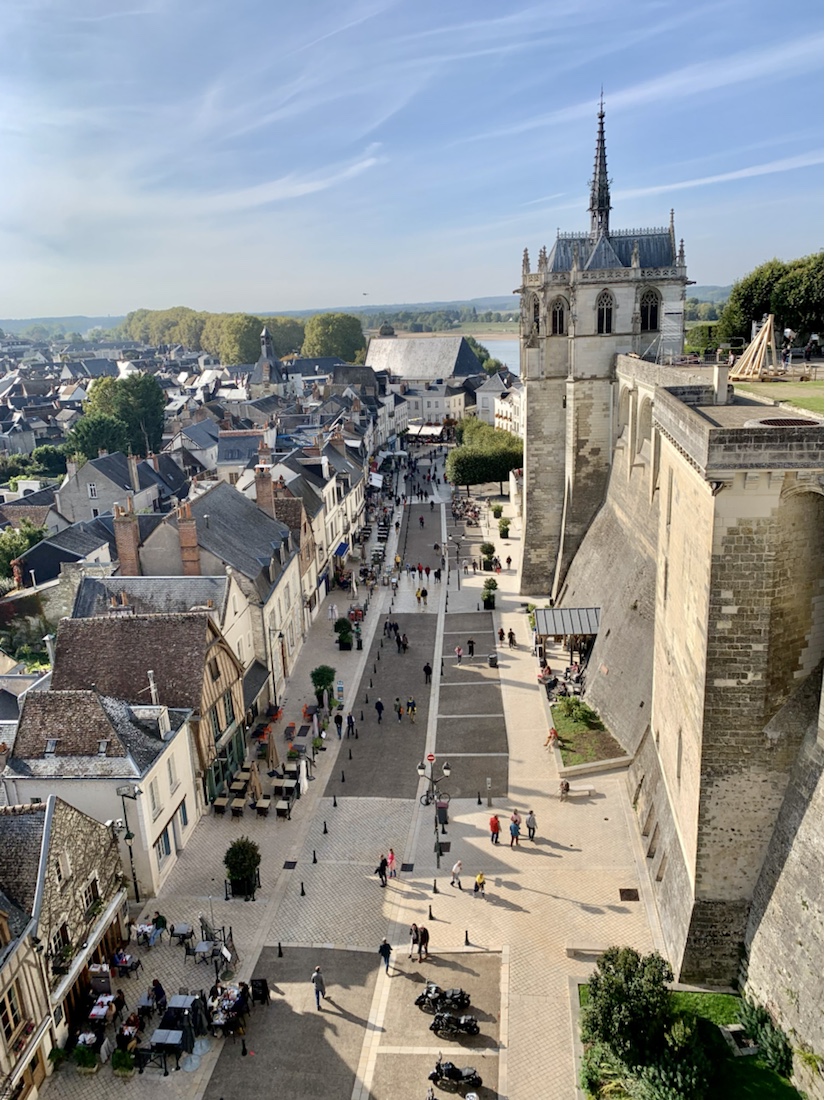
We had a v tasty dinner in that place there 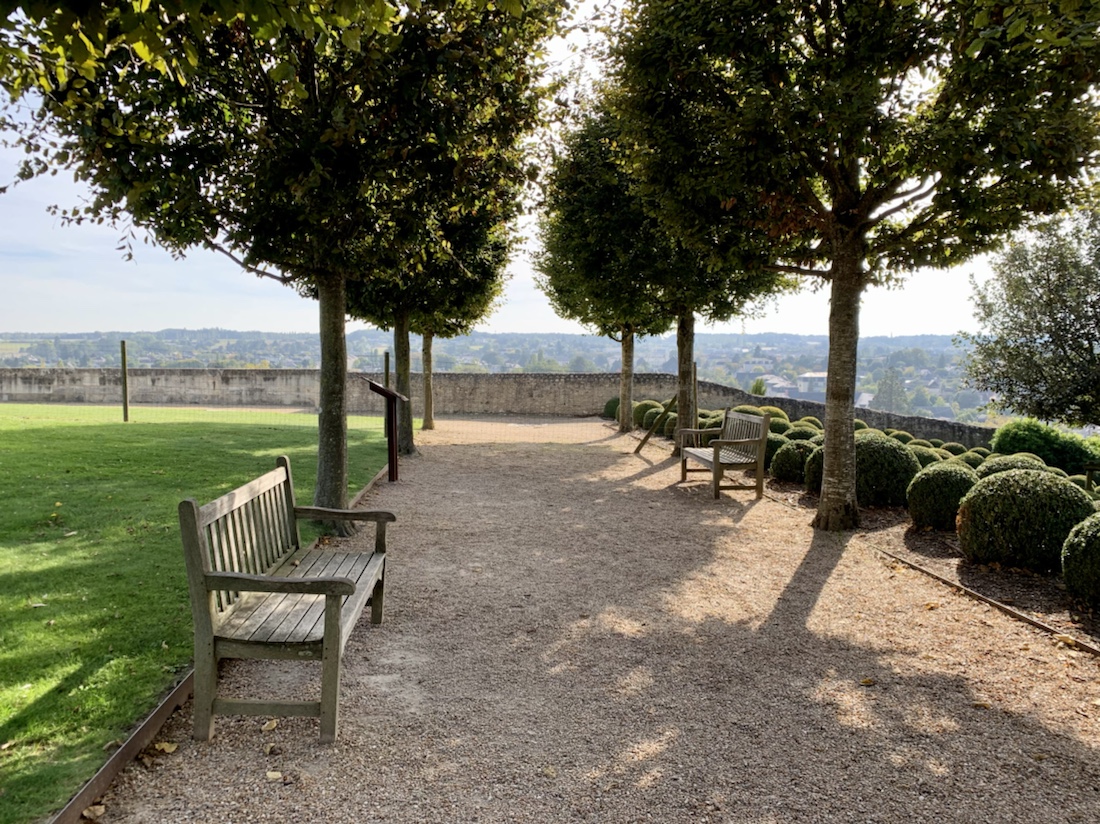
the Orangerie 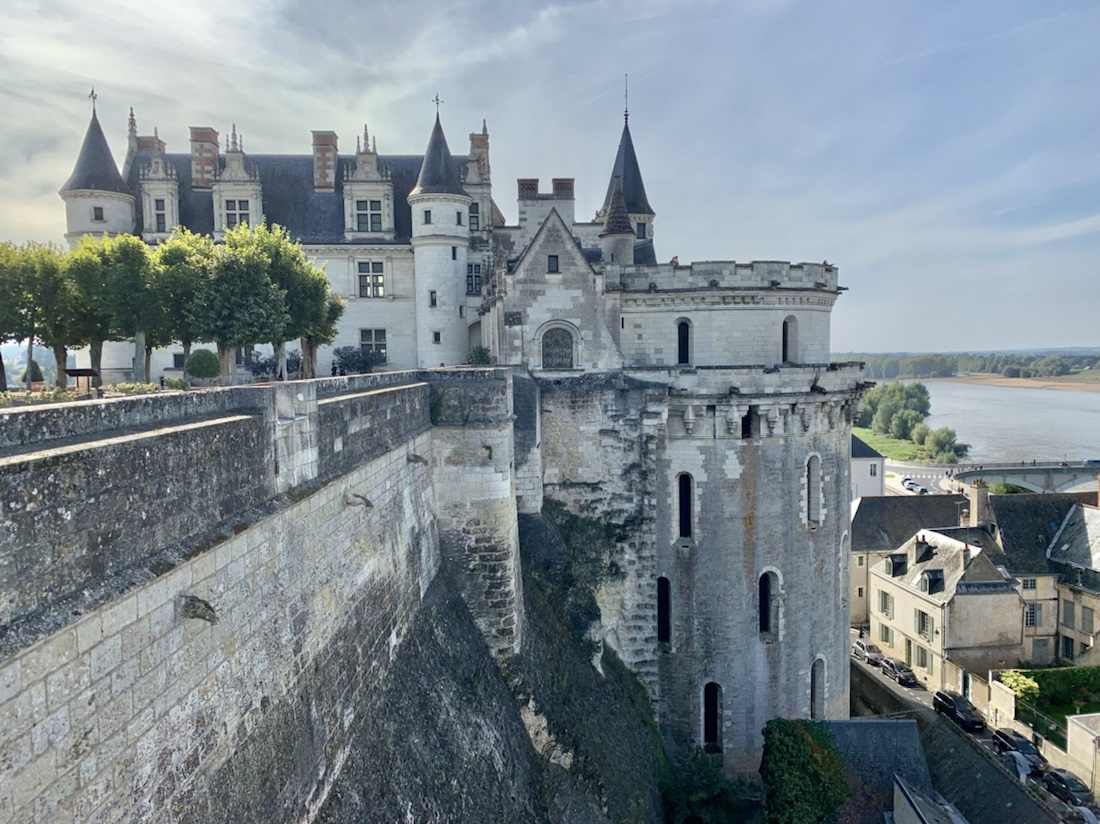
Chateau d’Amboise 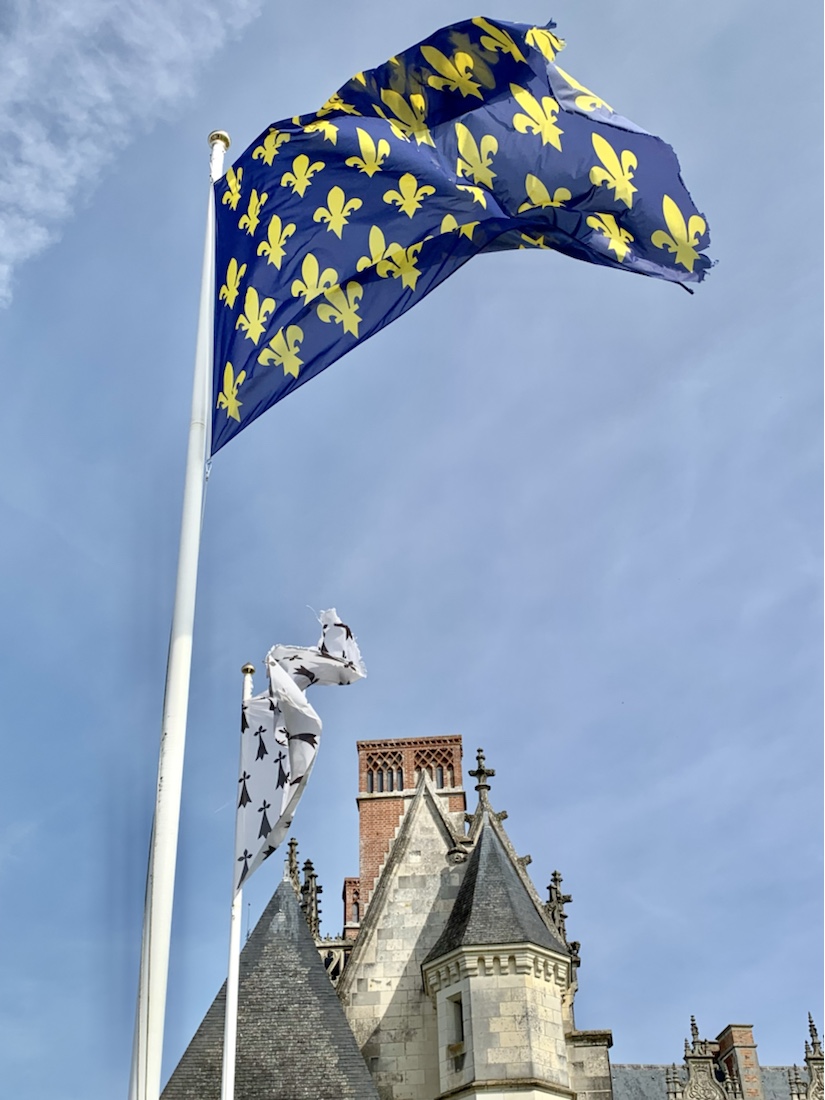
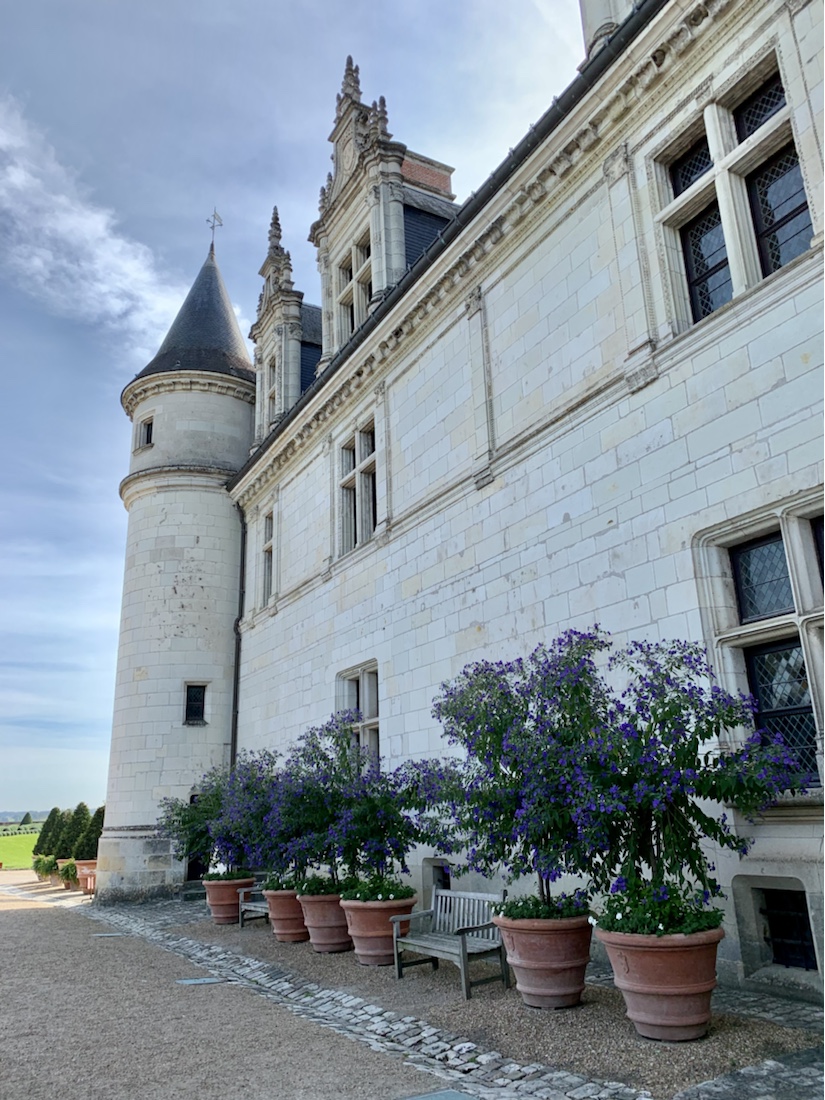
so FRENCH, right? 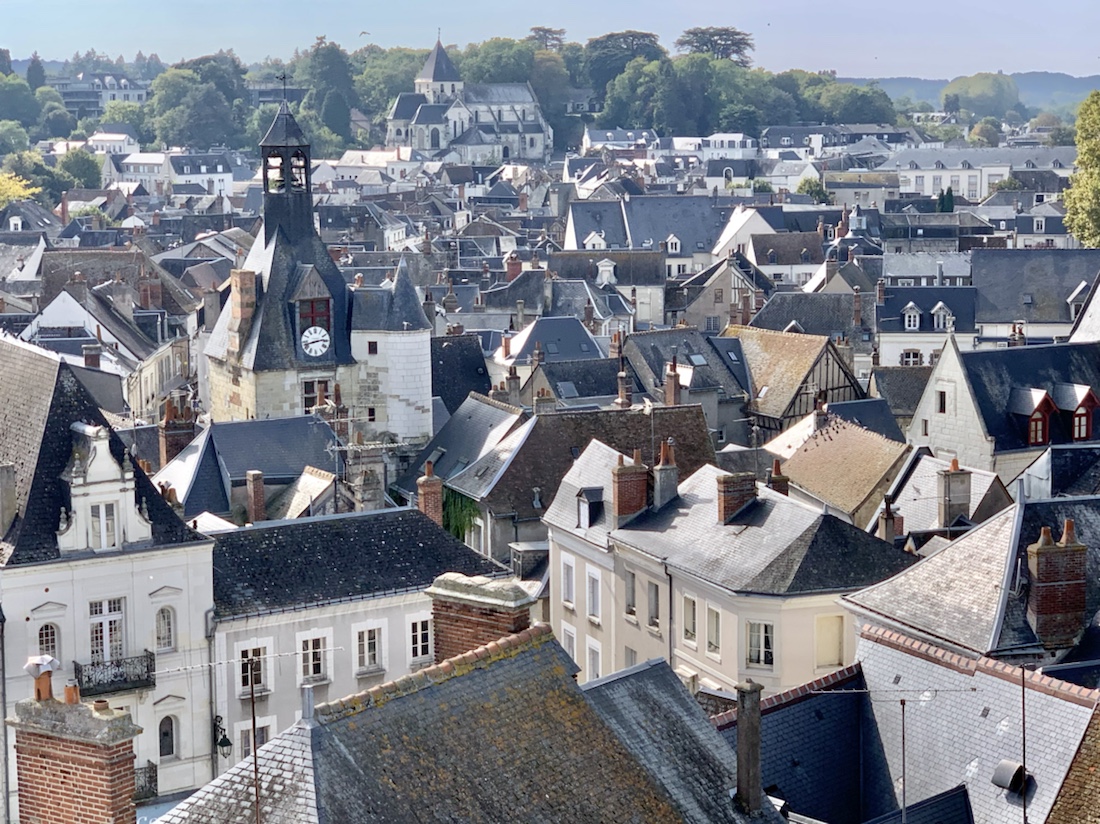
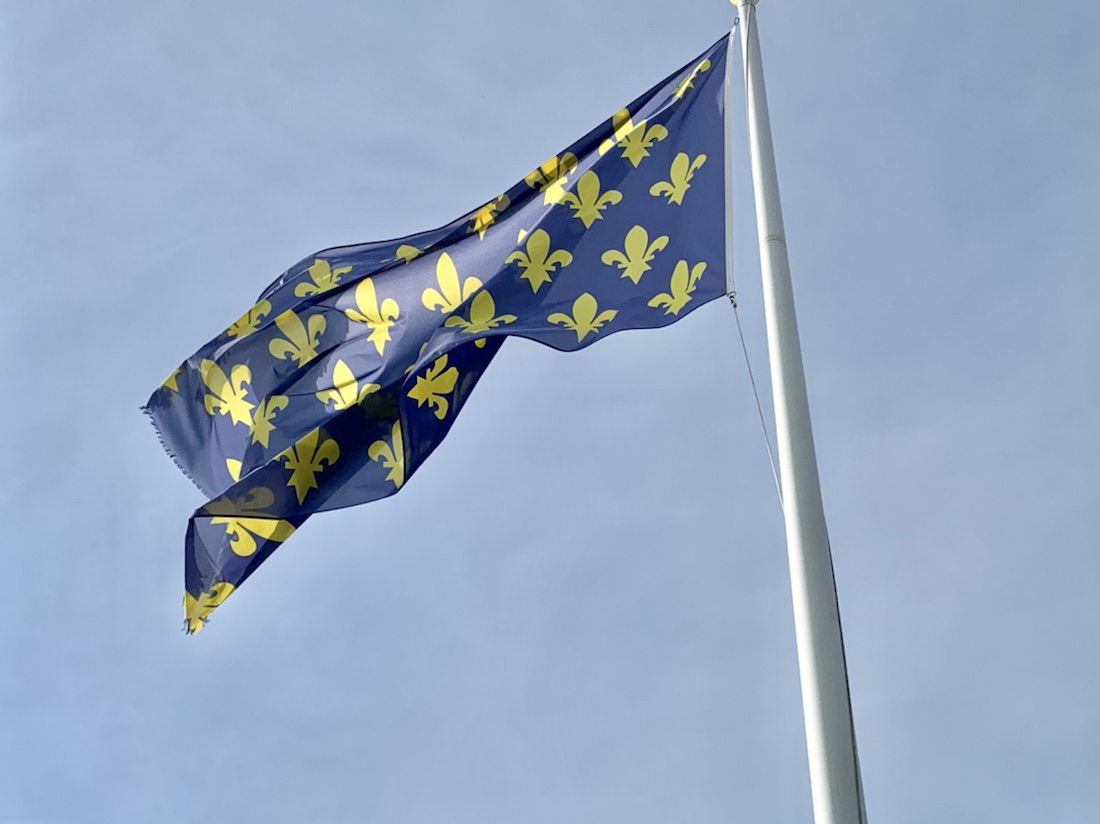
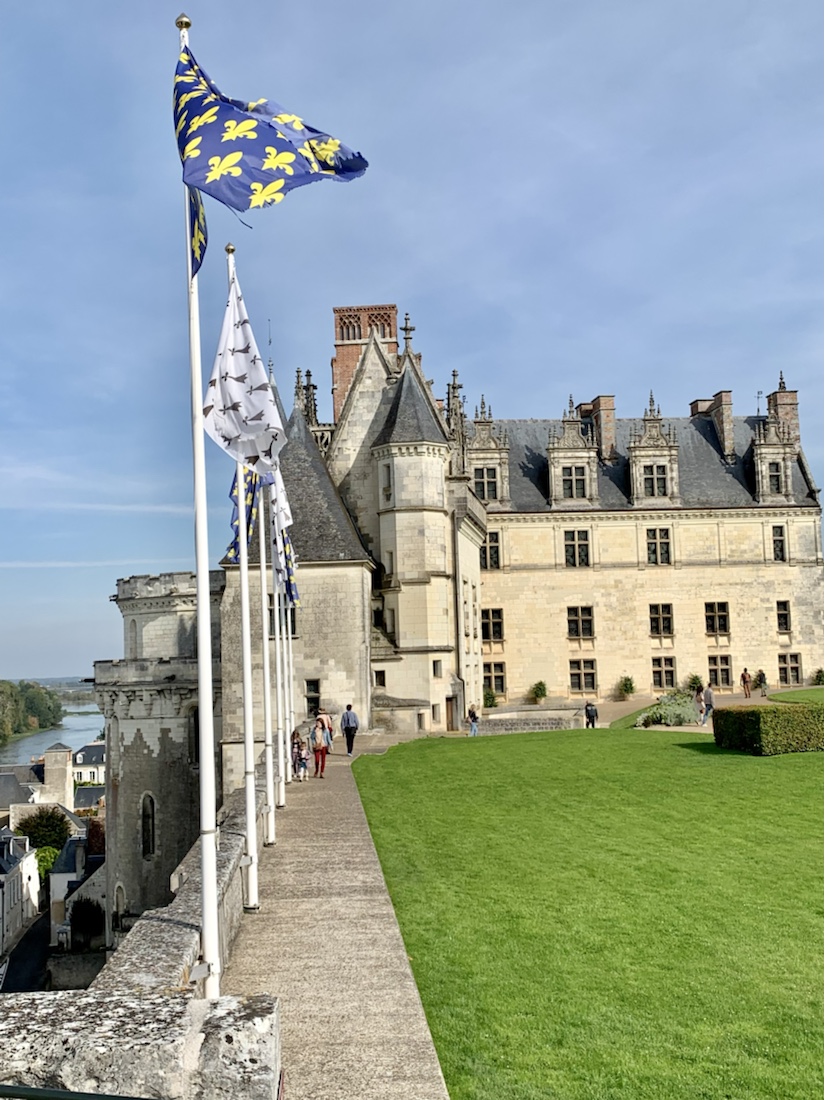

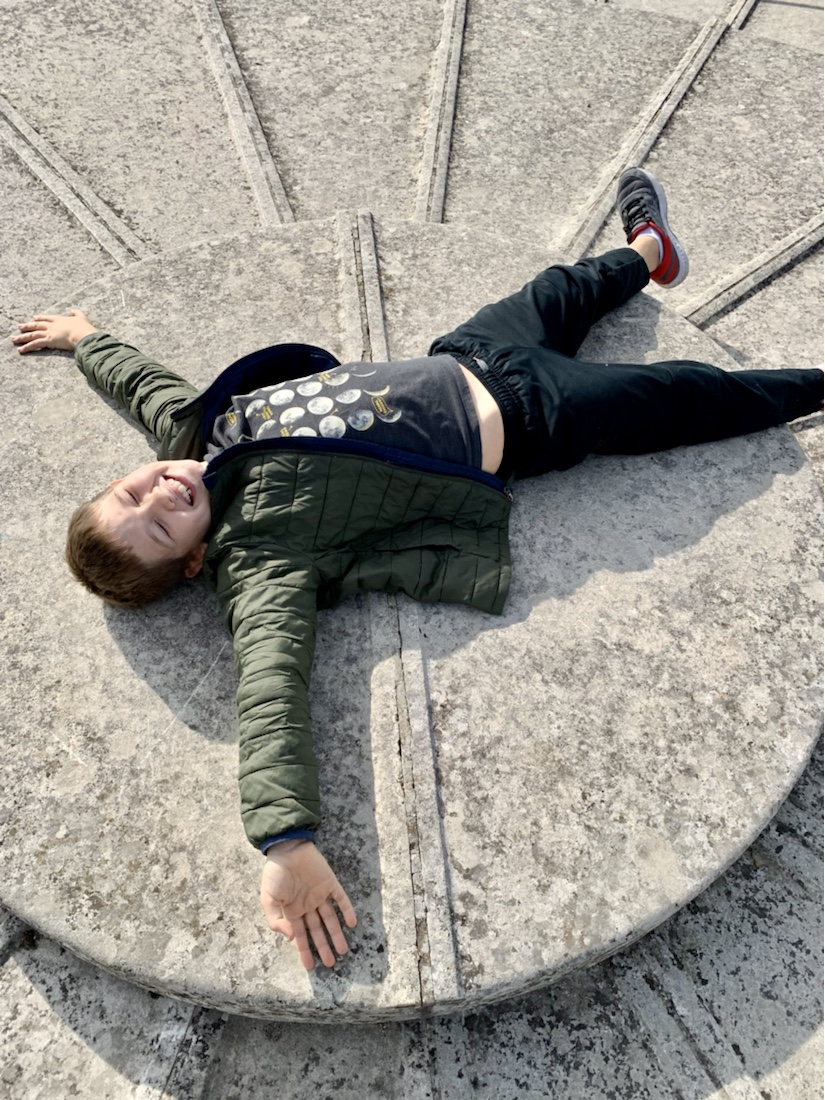
Get it? He’s a son dial 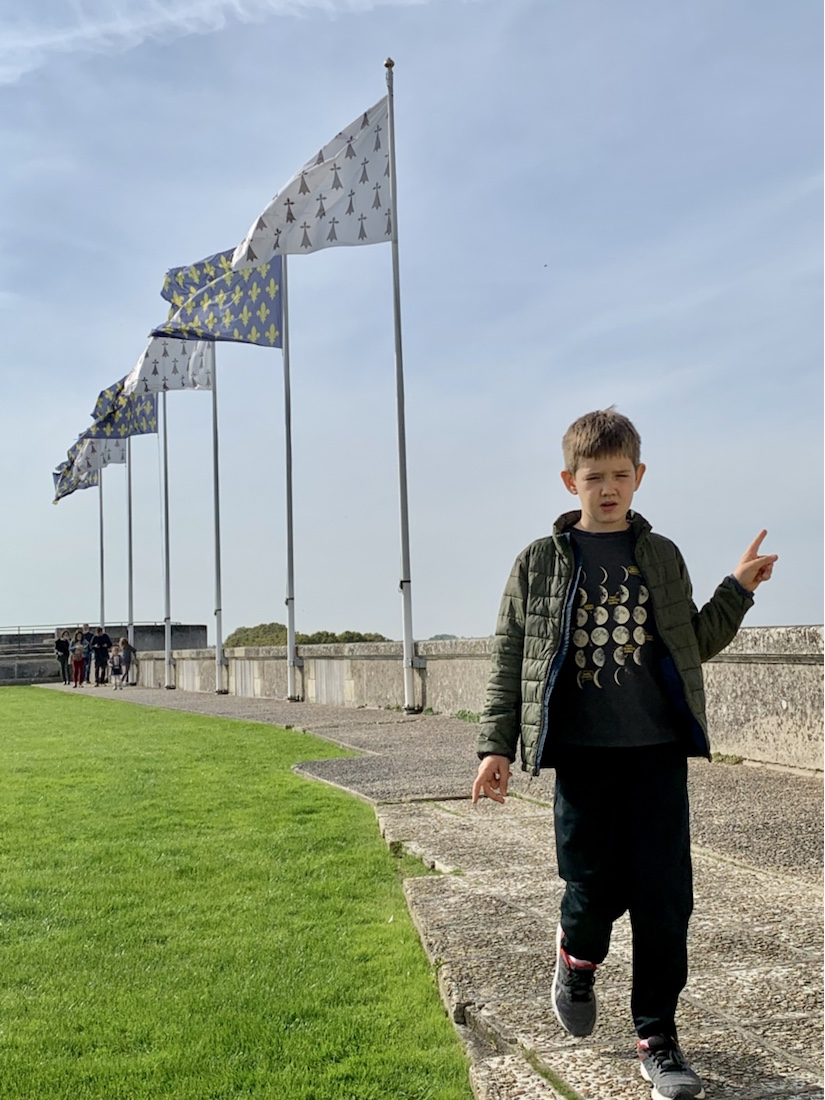
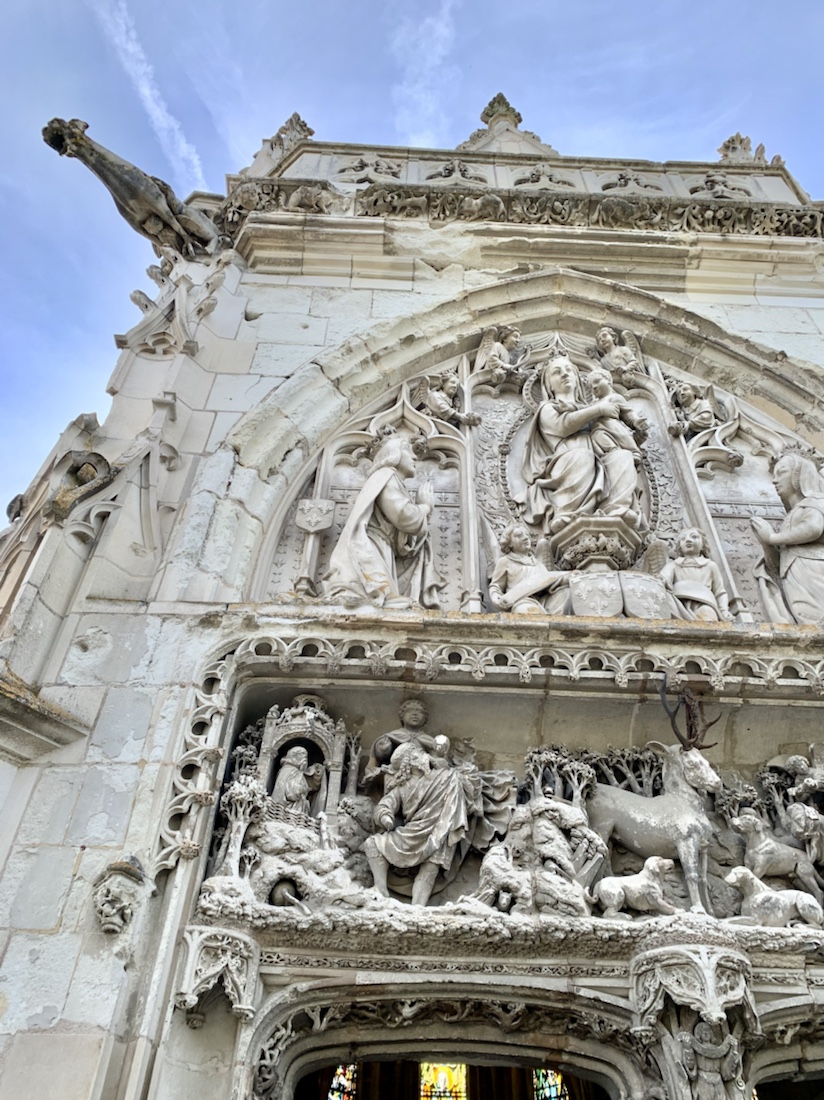
St. Hubert Chapel 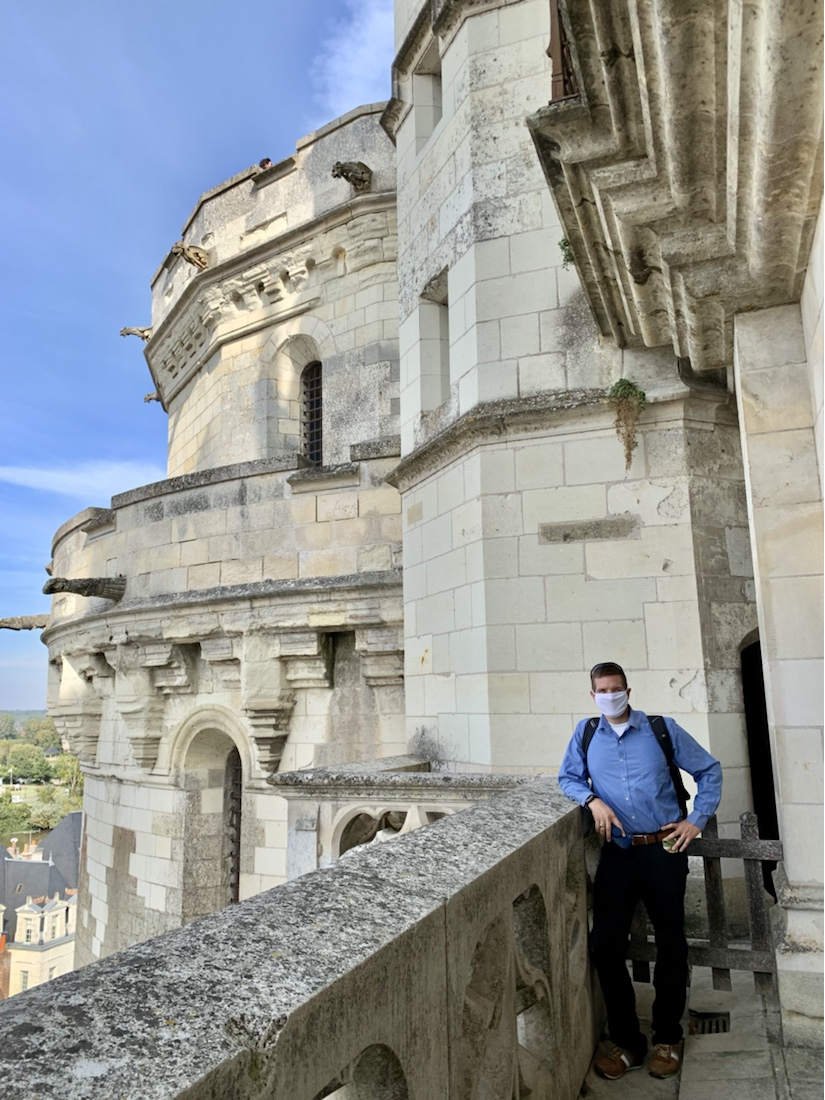
Chris likes castles 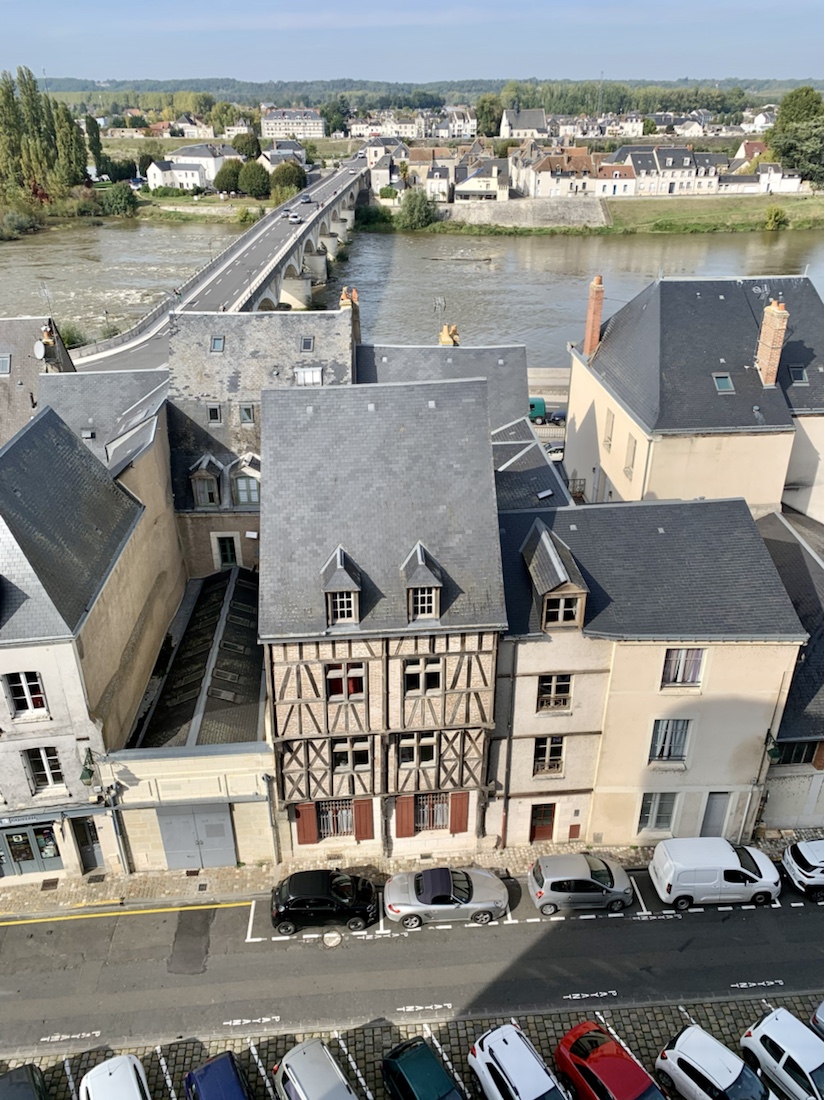
Clovis wuz here
So much random historic stuff happened here it’s hard to keep it remotely straight. In the late 1400s, Anne of Brittany married the French King Charles VIII after both wiggled out of royal engagements with the Hapsburgs etc., ending a bunch of fighting between the Duc of Bretagne and the Hapsburgs against the French monarchy. All their children died young. Charles tried to invade Naples for a long time and inspired others to do the same. It didn’t ultimately work out, but they did import a lot of Italian styles and ideas into France that way.
Let me briefly put in a cautionary tale for all the Navy people I know: It’s an early April day in 1498. King Charles and Anne are walking along in the chateau grounds, heading to a tennis match. They must have been in a rush because he hit his head on a door lintel hard enough that he missed the tennis match and died within hours. Either that or Anne smacked him with a frying pan and blamed the door. Either way, it’s a cautionary tale because I’ve heard many navy people discussing the dangers of being in a hurry on ship. Ask Chris why his call sign used to be Stitch—he was running late for a meeting, quickly stepping over while simultaneously ducking under ship doorways (designed to seal closed in the event of ship flooding). The next thing he knew, he had a half-shaved head, 10 stiches, and missed his meeting completely. Chris, pay attention to Charles. This seems like a crappy way to die.
Anyway, you may have heard of some of the Italians invited to visit French kings in the Loire Valley as honored guests, like Leonardo da Vinci, who lived out his final years in Amboise is buried in the St. Hubert Chapel in the Amboise chateau. More about him when we tour his chateau.
Poor Anne of Brittany, head-smacked husband dead without an heir, had to marry his successor, Louis XII. His cousin, Francois Premier, is the next successor. He is a big deal in this area because of the Battle of Marignano in Italy, after which he was crowned in glory with the Pope’s support. He was instrumental in promoting the French Renaissance and setting the foundation for today’s France. You may remember from Chateau de Chenonceau’s history that there was a lot of back and forth between Protestant and Catholic power at this time, in the mid 1500s. Francois Premier let it be known he did not bow to the Pope’s rule and secretly favored church reform while also distancing himself from any controversy.
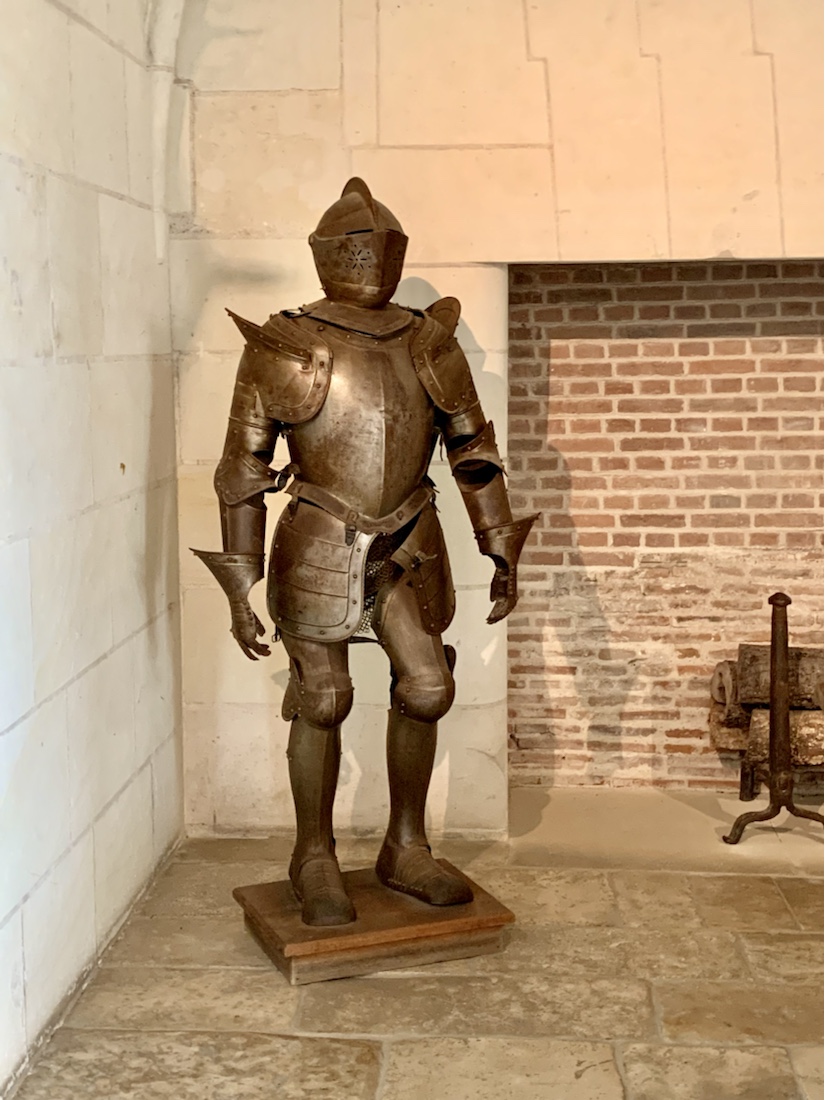
not a replica! 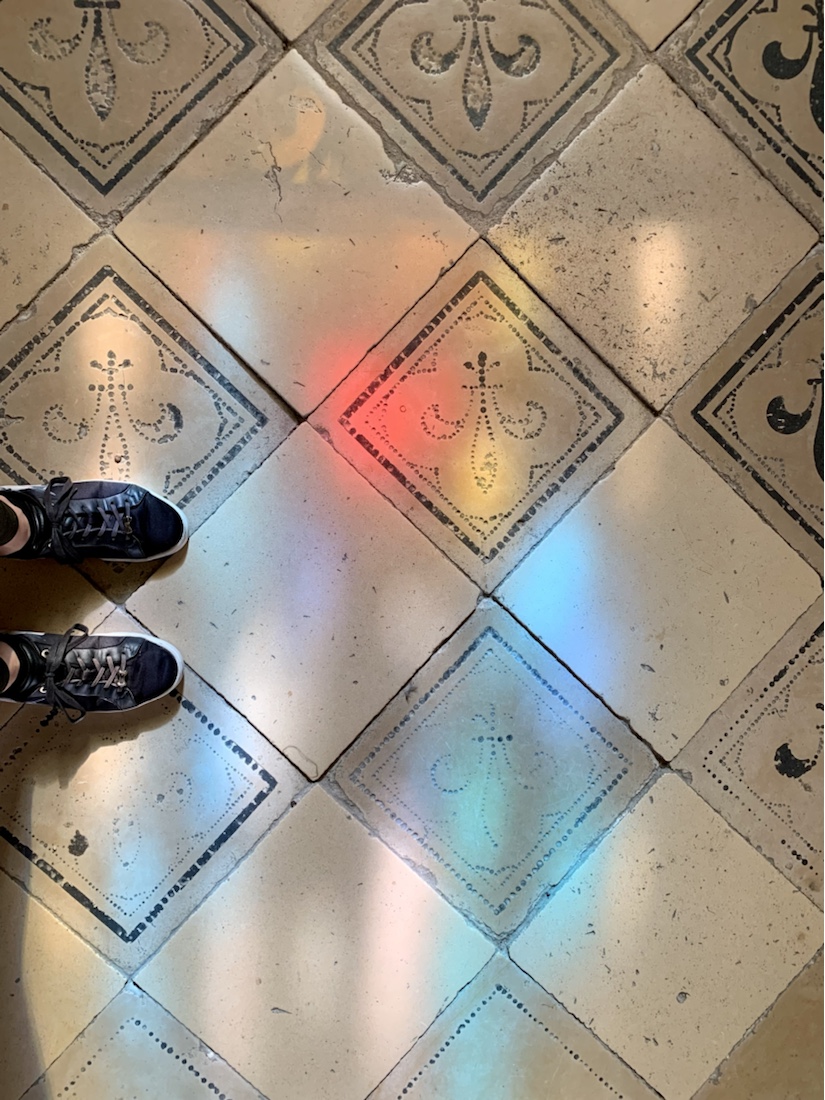
St. Hubert’s Chapel 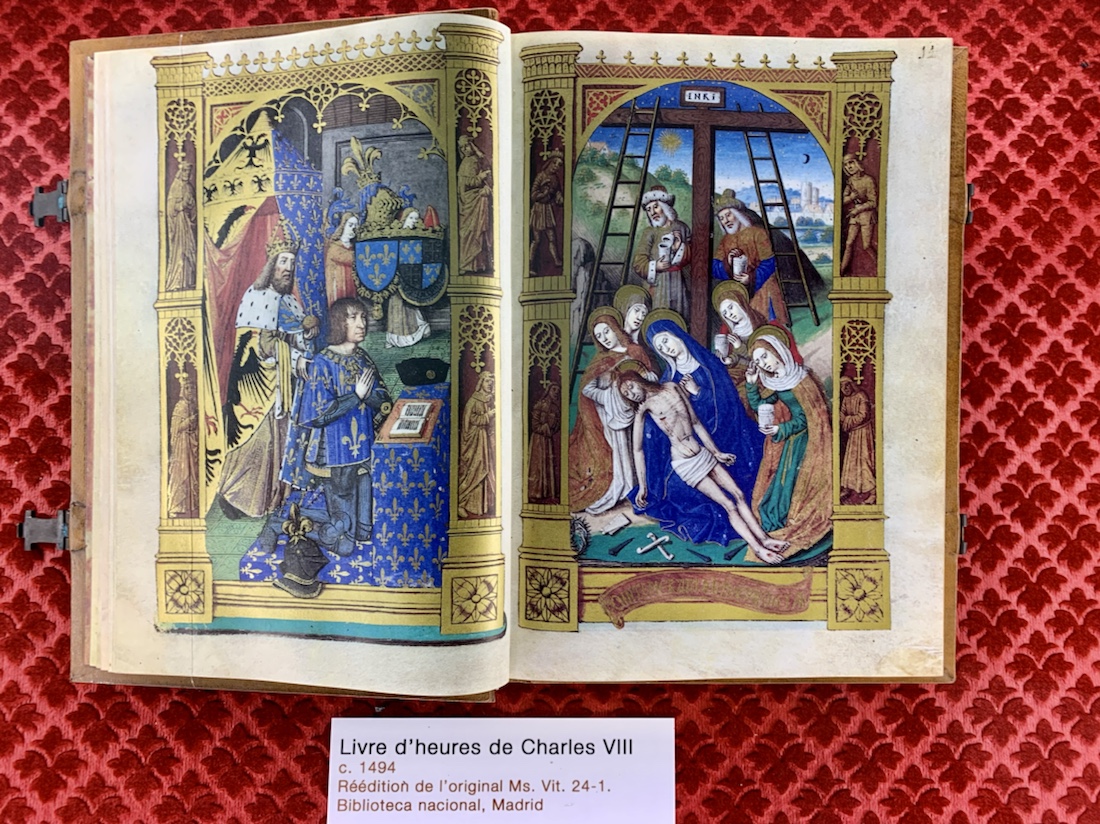
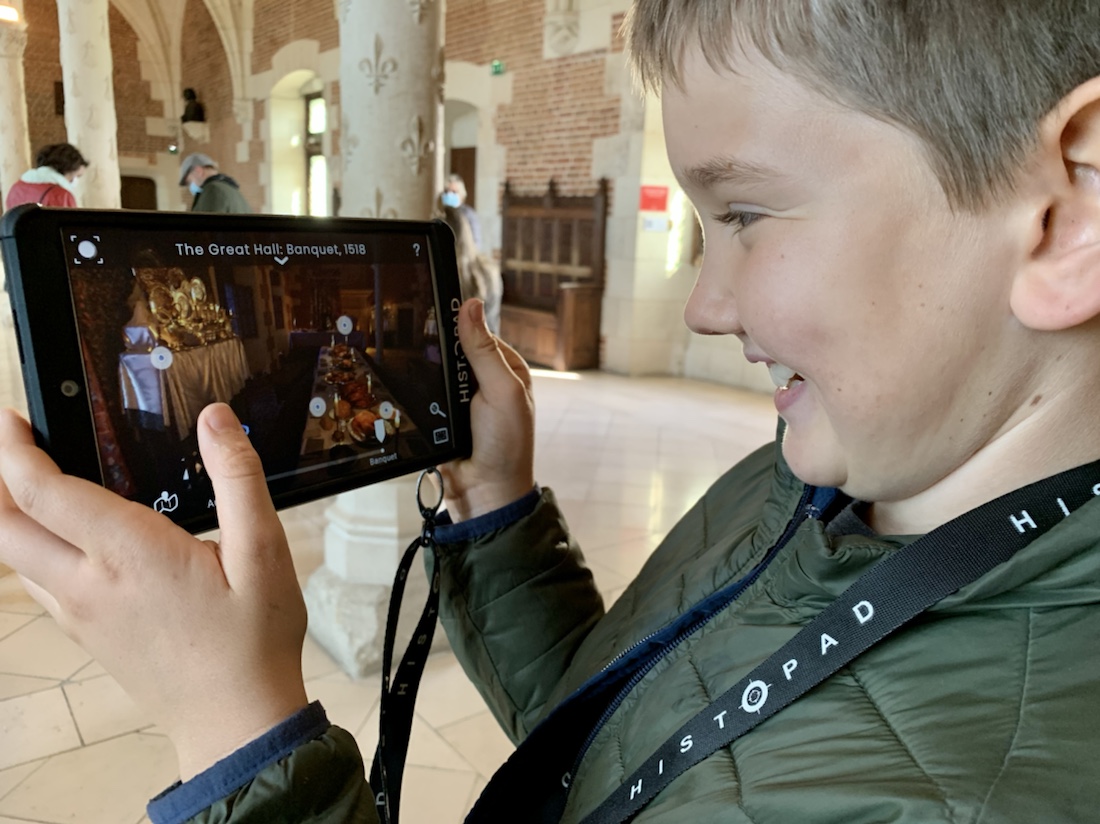
the “window to the past” the kids loved 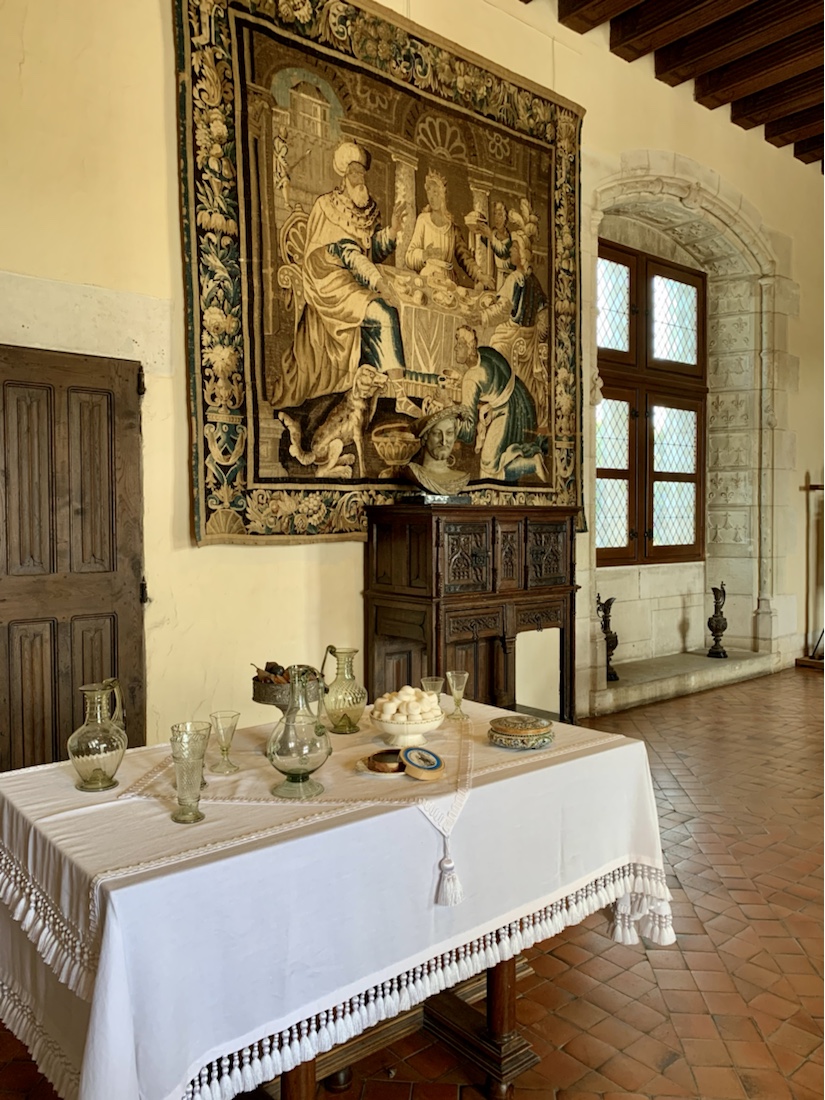
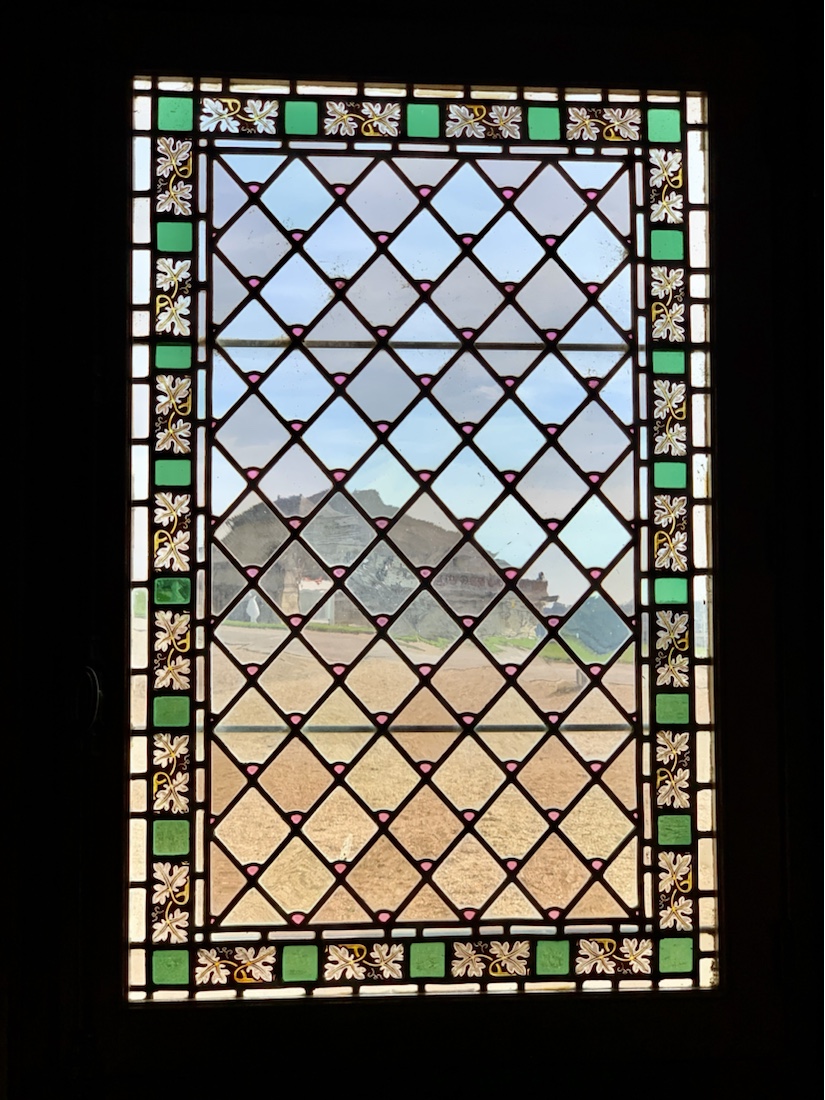
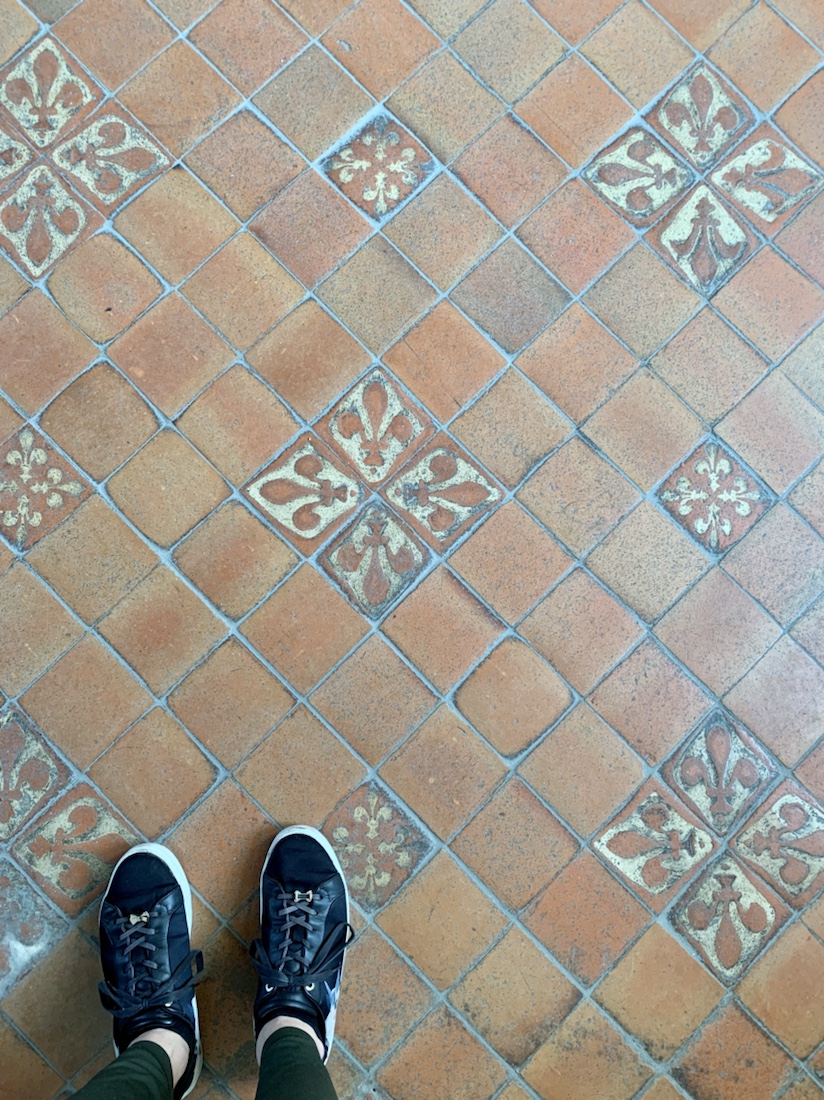
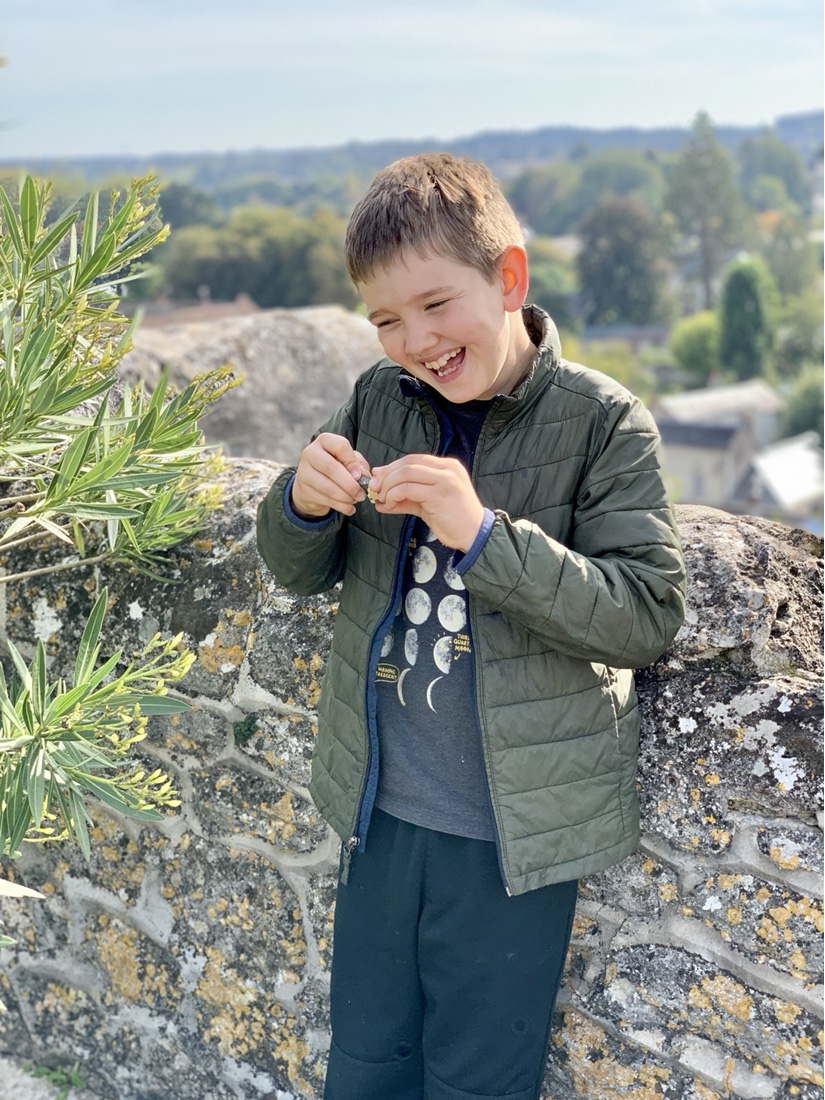
Isaac shaving a chestnut with a rock 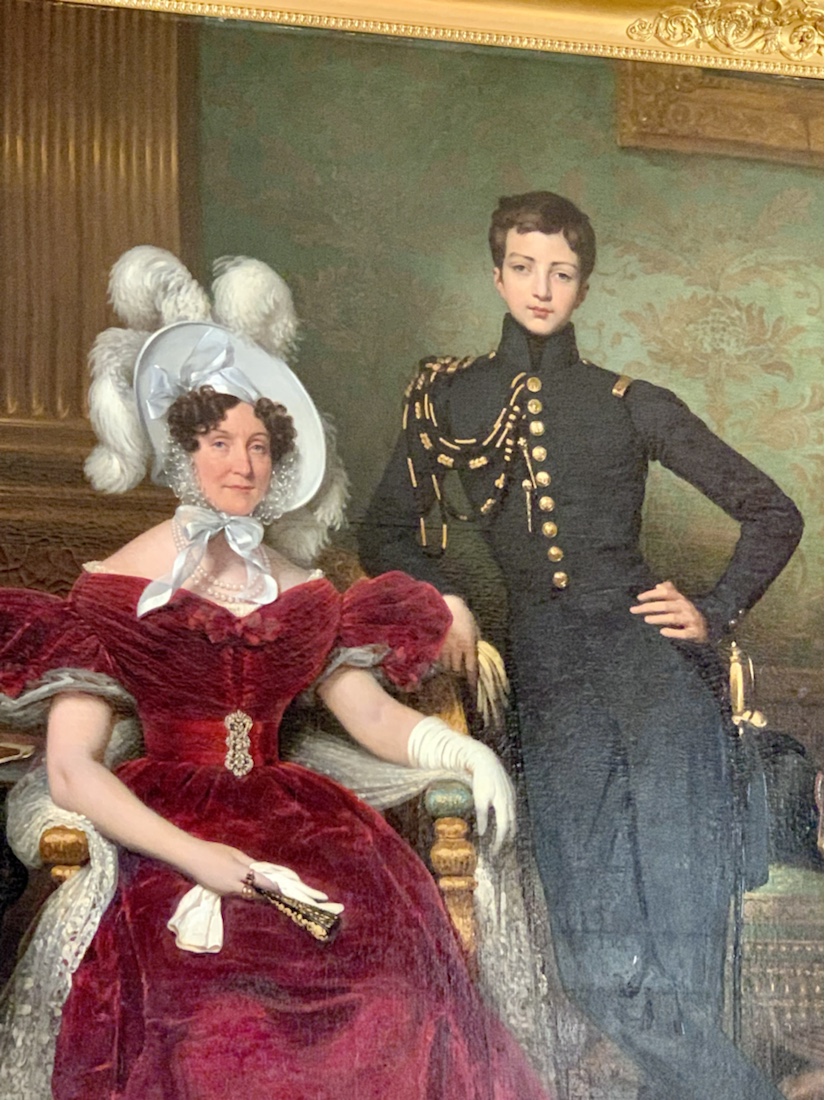
I think Isaac looks a LOT like Francois d’Orleans, Prince de Joinville (1818-1900) 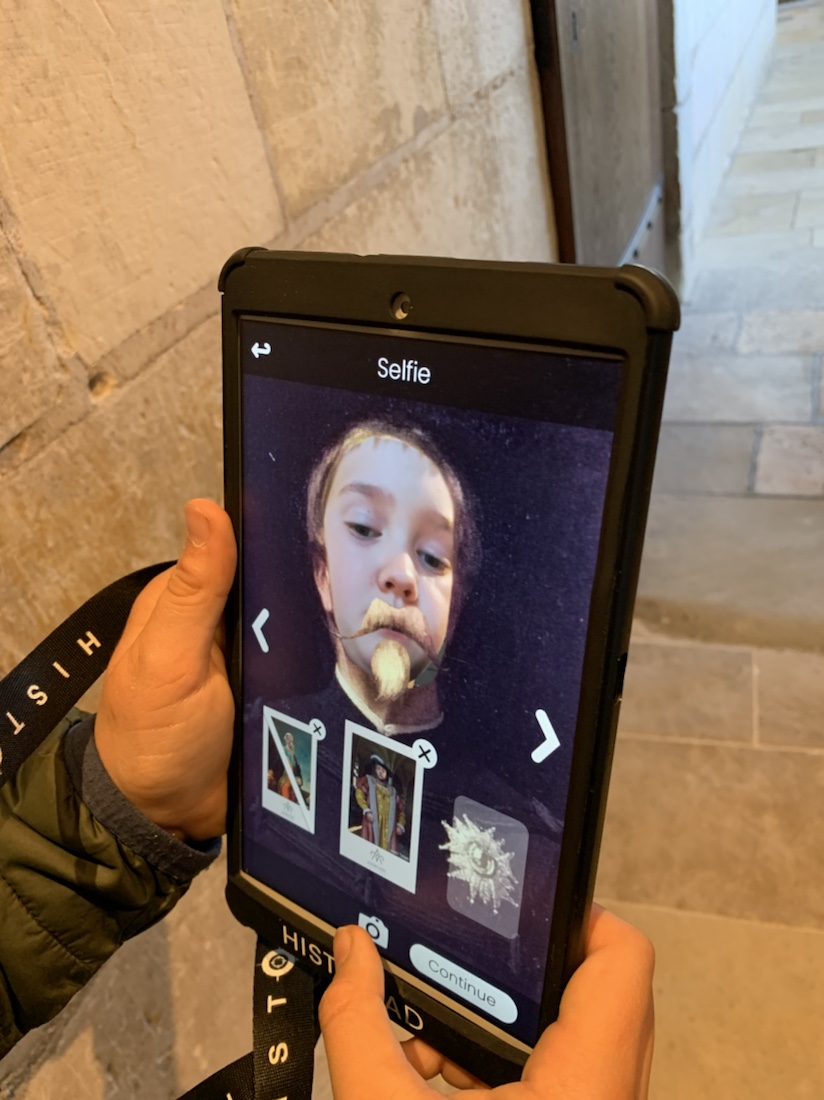
Isaac’s other favorite part of the chateau… the mustache selfies 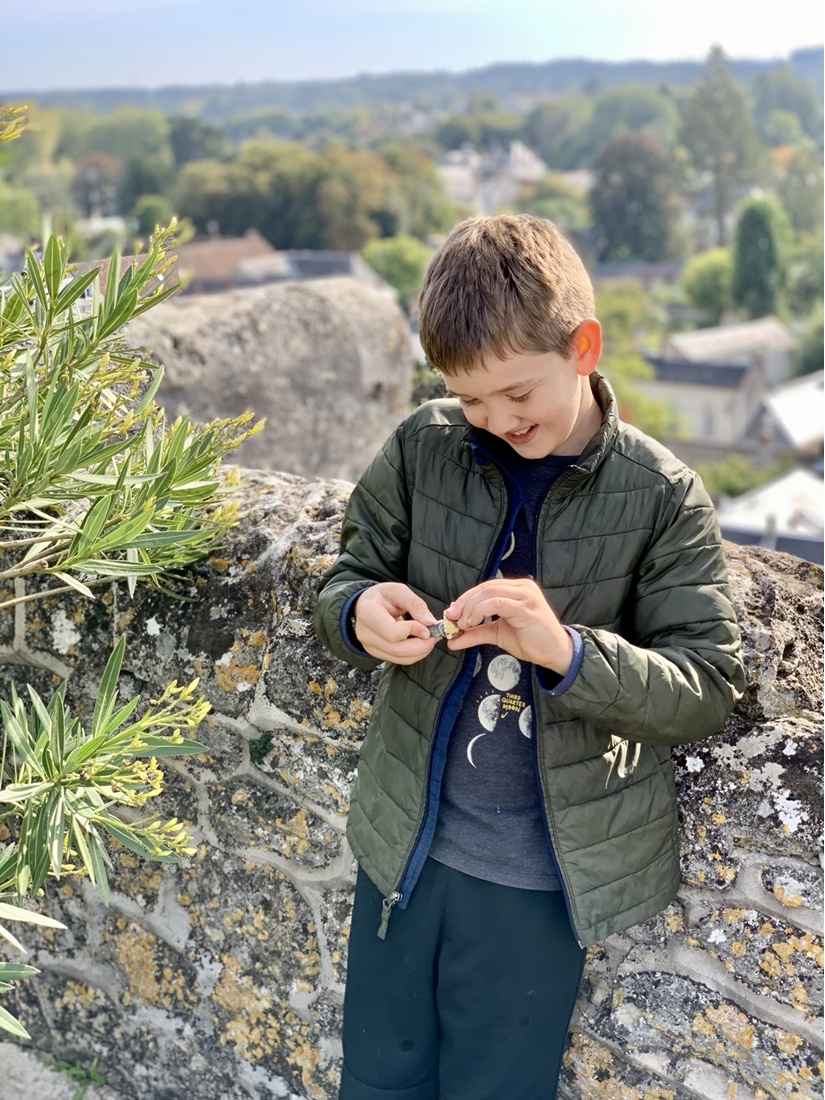
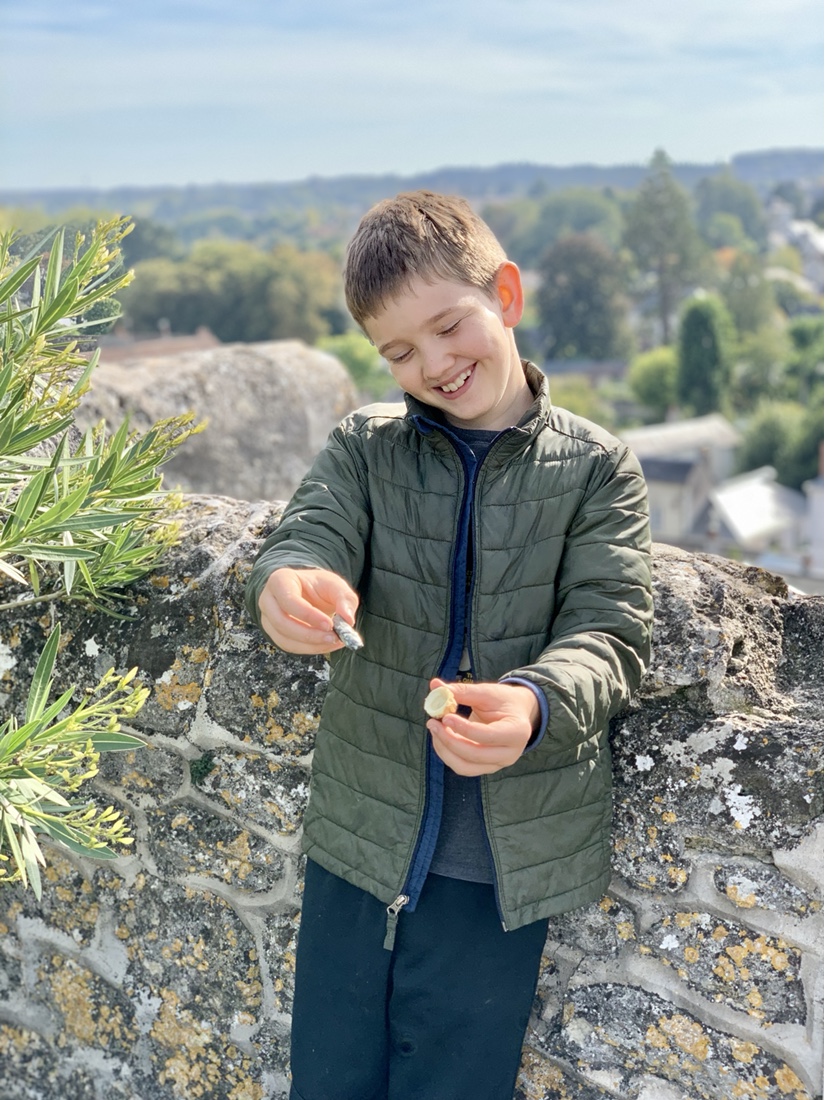
nice flat nut
The Amboise Conspiracy: On October 18, 1534, the people of Amboise awoke to find posters decrying the “terrible, great and unacceptable abuses of the papal Mass” posted on the door of the king’s chamber and around major towns. Hundreds of people were arrested and tried for heresy and burnt alive. This controversy continued into the life of King Francois II (this guy is son of Henry II who gave Chenonceau to his mistress Dianne and died of the splinter infection in his eye, with his wife Catherine of Medici, who took Chenonceau for herself and ruled France from her Green Study there while the little king grew up). So King Francois II marries Mary Stuart, Queen of Scots. Protectants tried to remove Francois II from Mary’s powerful uncles’ influence…by kidnapping him. That’s right, they kidnapped the king of France from the Chateau d’Amboise here. They were arrested, executed, and dangled over the chateau’s balcony as an example. Yikes! It didn’t end there, but I don’t know what happened next because it went on for decades.
The chateau fell in and out of favor and changed hands, eventually lying under the purvey of the minister of war. He decided this seemed like a good place to house state prisoner Emir Abd al-Kader and his retinue of 80 people from 1848 to 1852. The Emir led nomadic tribes against the French in Algeria and was taken captive. Napoleon Bonaparte personally freed the Emir in 1852 and he left for Turkey and later Syria.
And now you can visit; explore the chateau, stroll the walls and survey the domain yourself. Just watch out for pesky doorjambs.
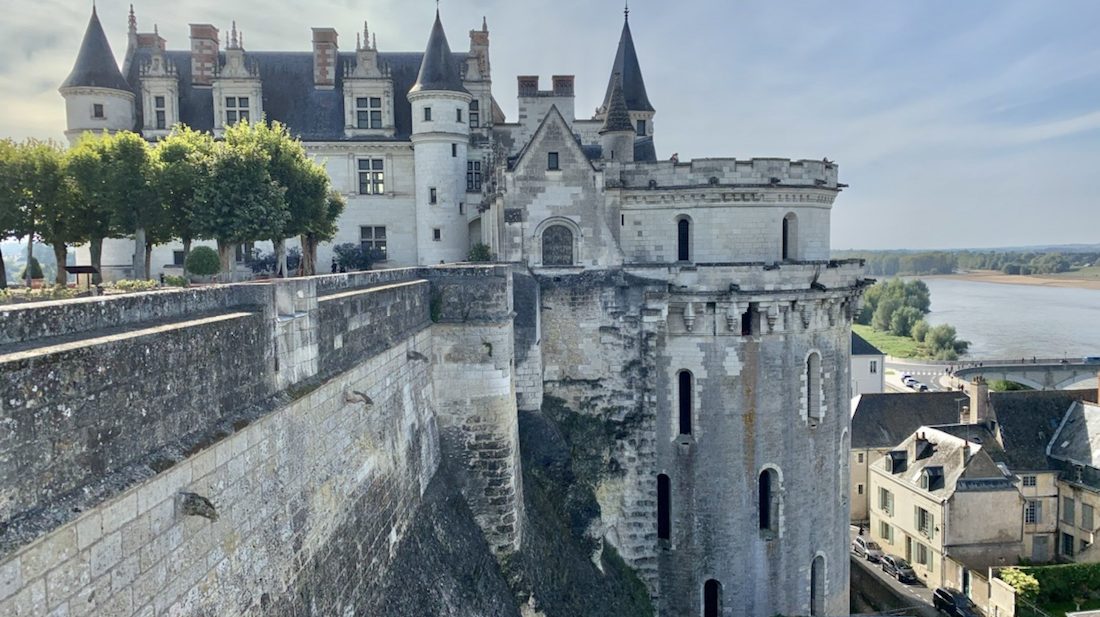
 WORLD’S BEST PIZZA
WORLD’S BEST PIZZA Pot au Feu
Pot au Feu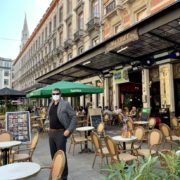 Birthdate in Brussels
Birthdate in Brussels Friday Night Rome
Friday Night Rome